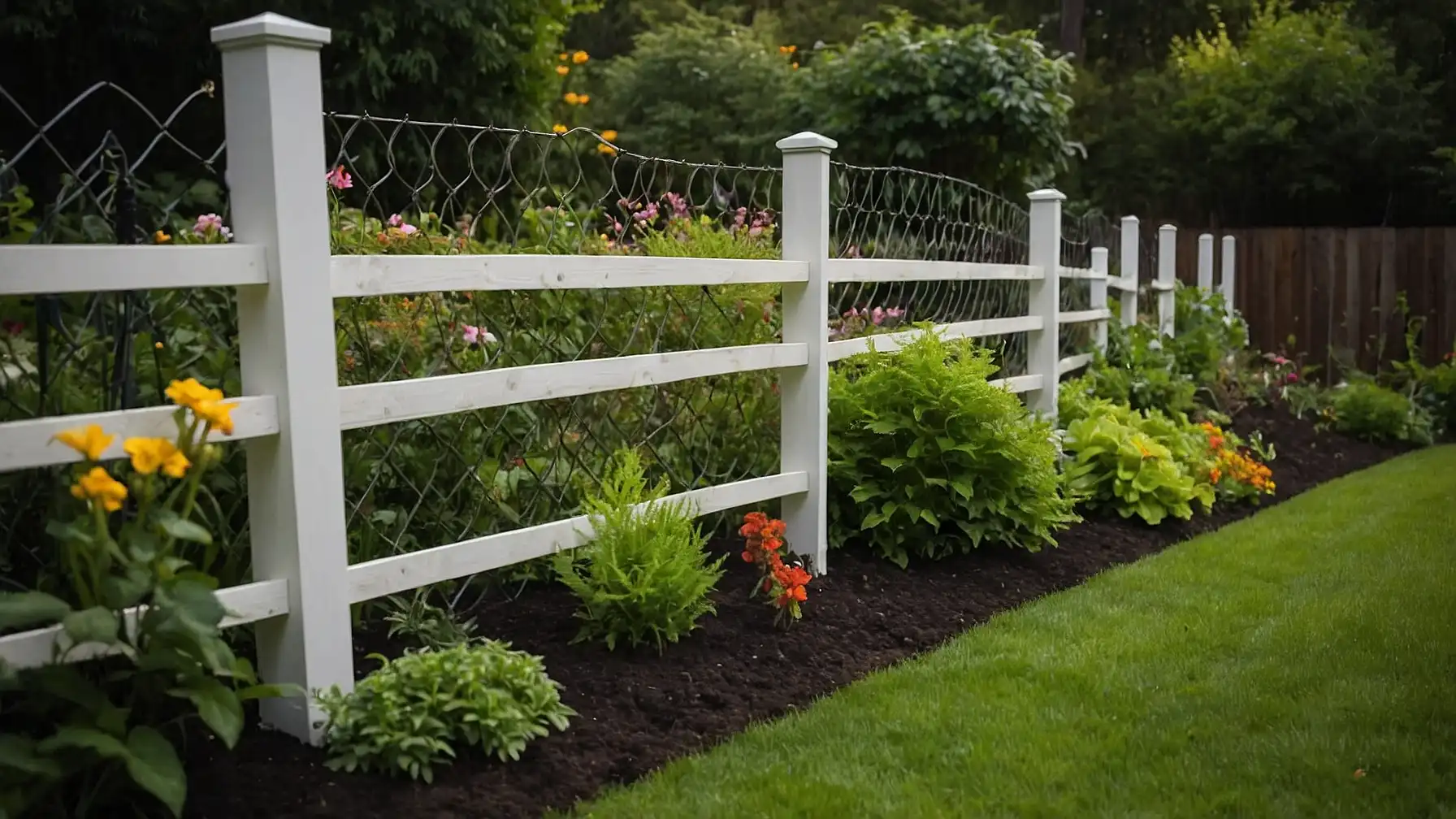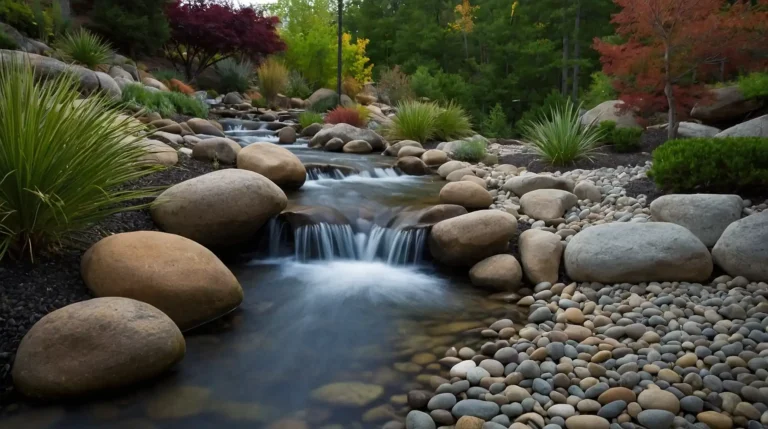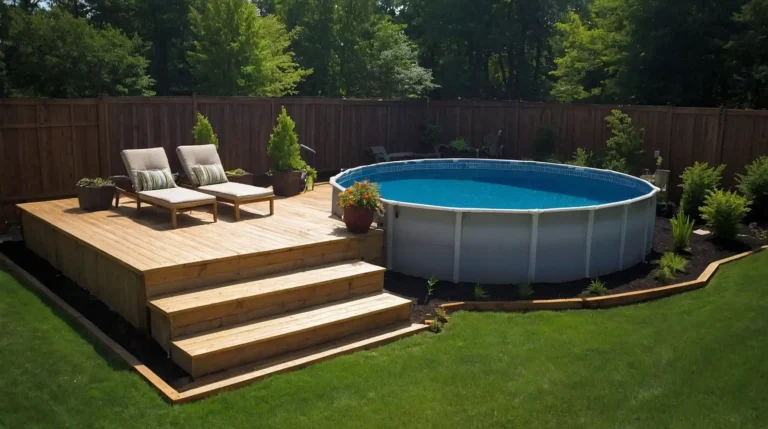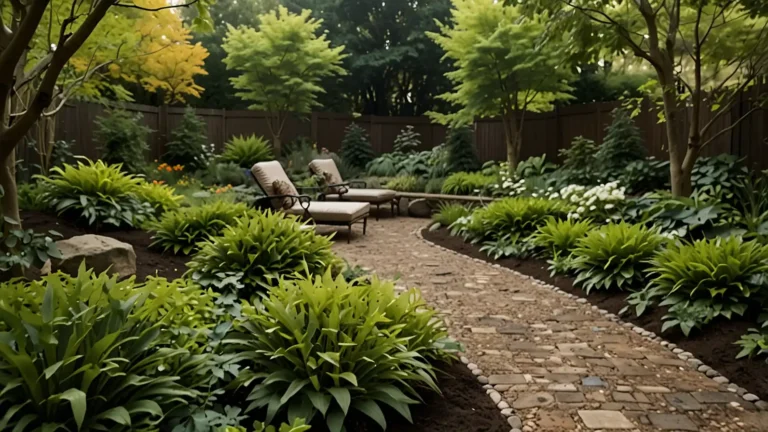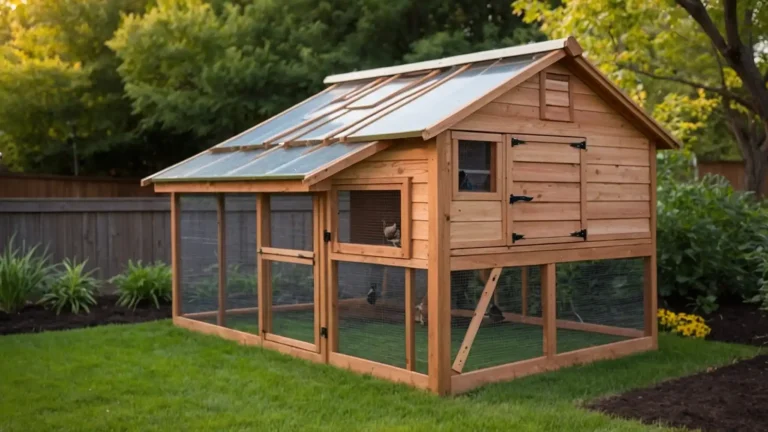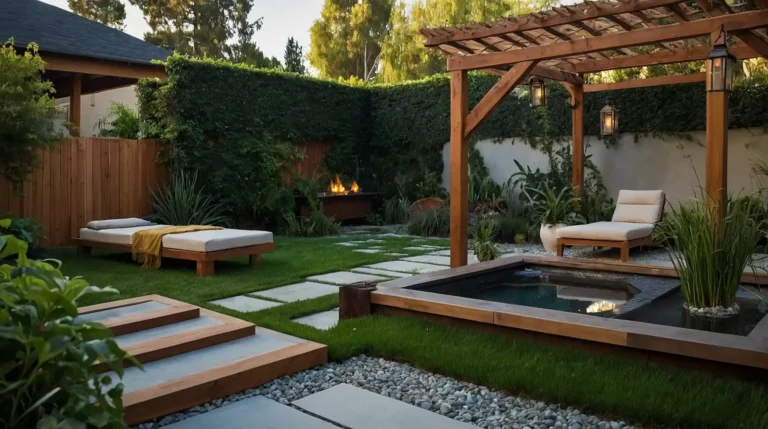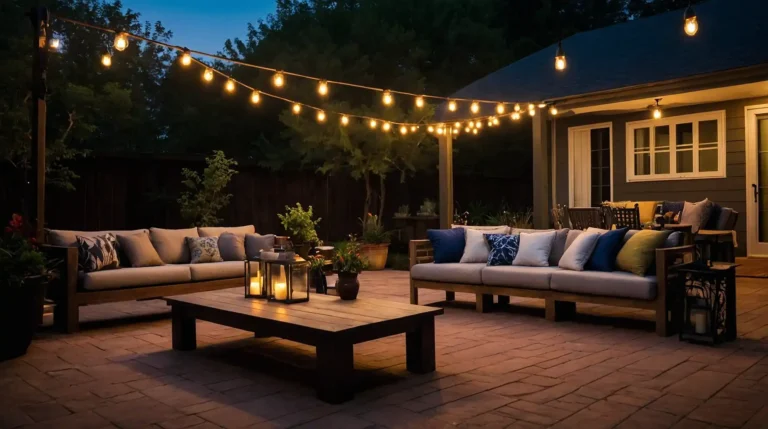27 Affordable Garden Fence Ideas
Creating beautiful garden boundaries doesn’t require a massive budget. Smart material choices and creative designs can achieve stunning results affordably.
You’ll discover fence solutions using recycled materials, natural elements, and budget-friendly alternatives. These ideas prove that style and function can coexist economically.
Whether you need privacy, decoration, or property definition, these affordable options deliver.
Let’s explore creative fencing solutions that transform your outdoor space.
1: Wooden Pallet Fencing
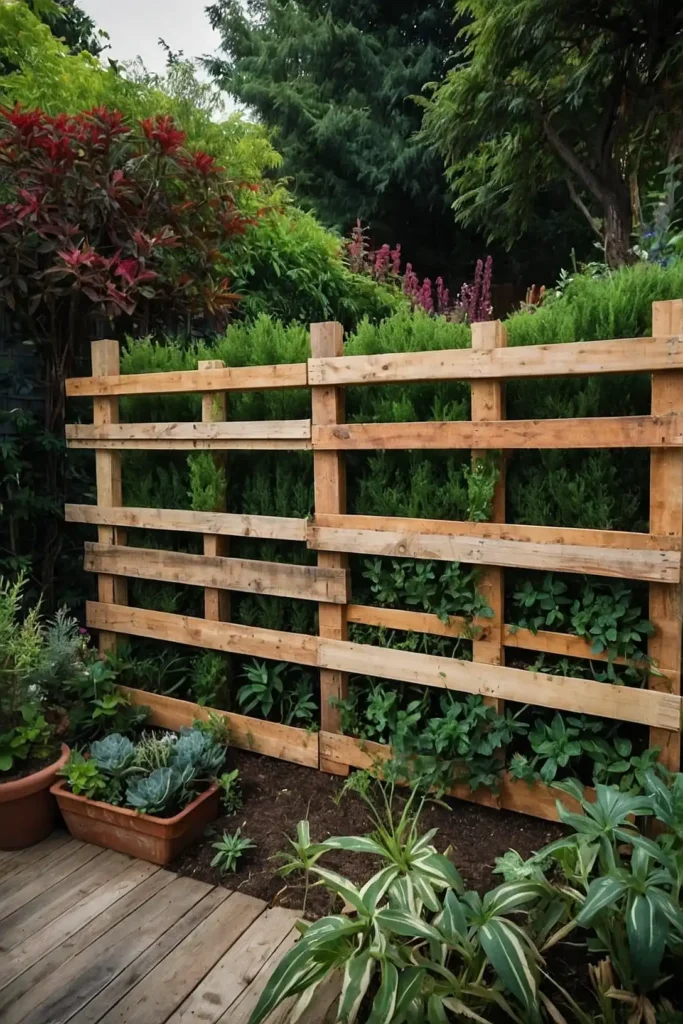
Transform free shipping pallets into rustic garden fencing. Clean and sand them before installation for best results.
Stand pallets vertically and secure with metal posts. Fill gaps between slats with additional wood strips if needed.
Stain or paint them to match your garden style. This option costs almost nothing but delivers charming results.
2: Bamboo Roll Fencing
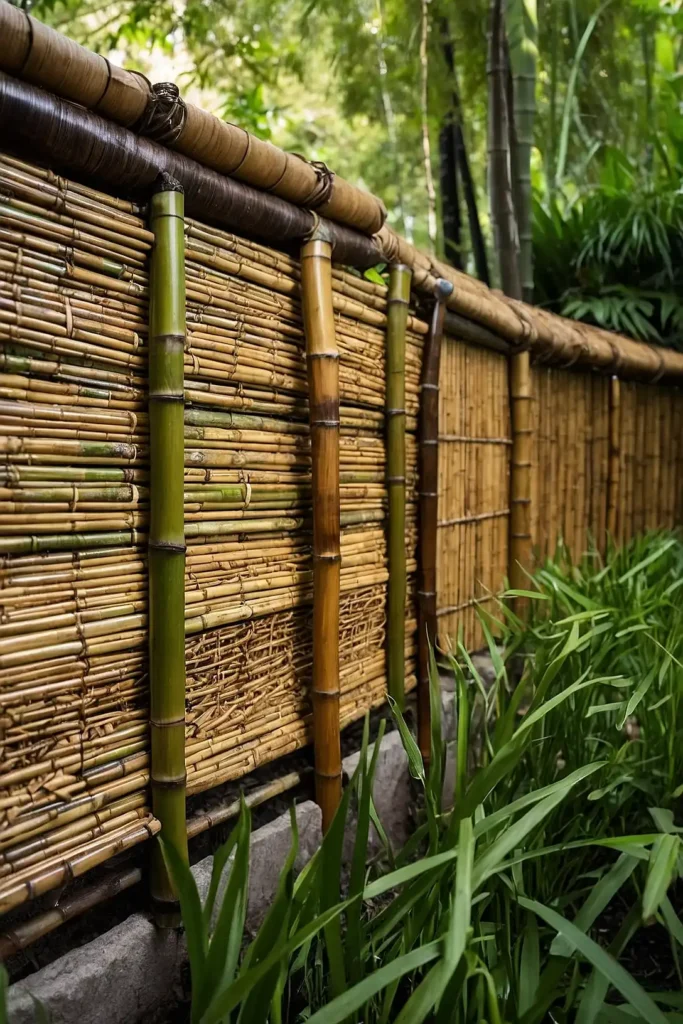
Install bamboo roll fencing for instant Asian-inspired privacy. These pre-made rolls attach easily to existing posts.
Choose natural or stained bamboo to complement your landscape. Secure with zip ties or galvanized wire.
Rolls typically measure 6 feet high and 8 feet long. They provide excellent wind resistance and natural beauty.
3: Chain Link with Privacy Slats
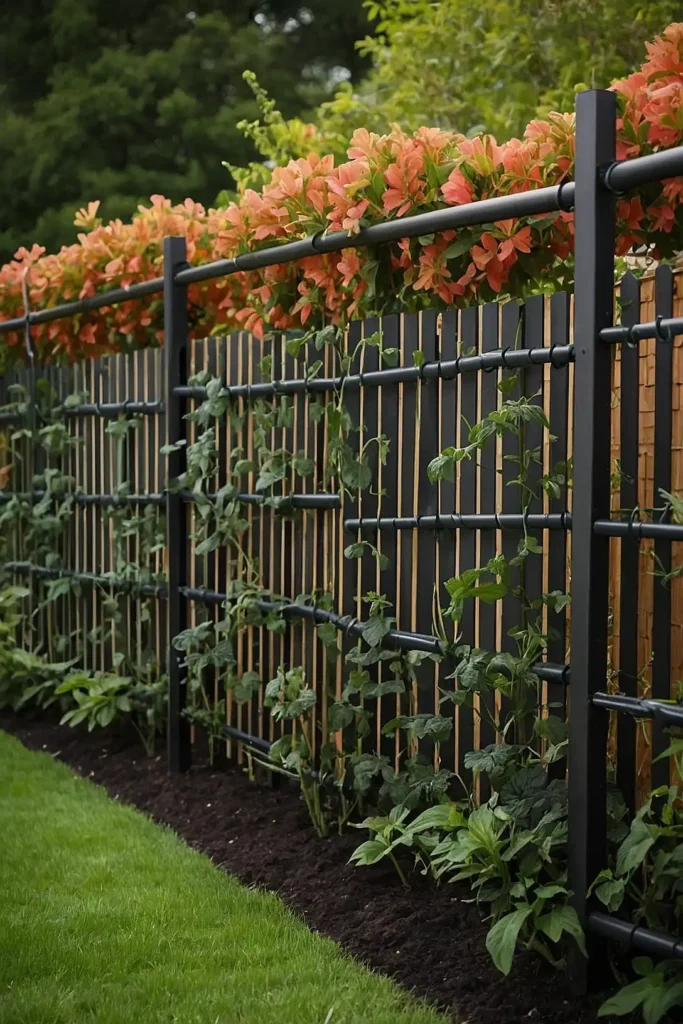
Upgrade basic chain link fencing with colorful privacy slats. These plastic strips weave through existing mesh easily.
Choose from dozens of colors and patterns. Installation requires no special tools or skills.
Privacy slats reduce wind flow while blocking visibility. They cost significantly less than replacing entire fence sections.
4: Lattice Panel Fencing
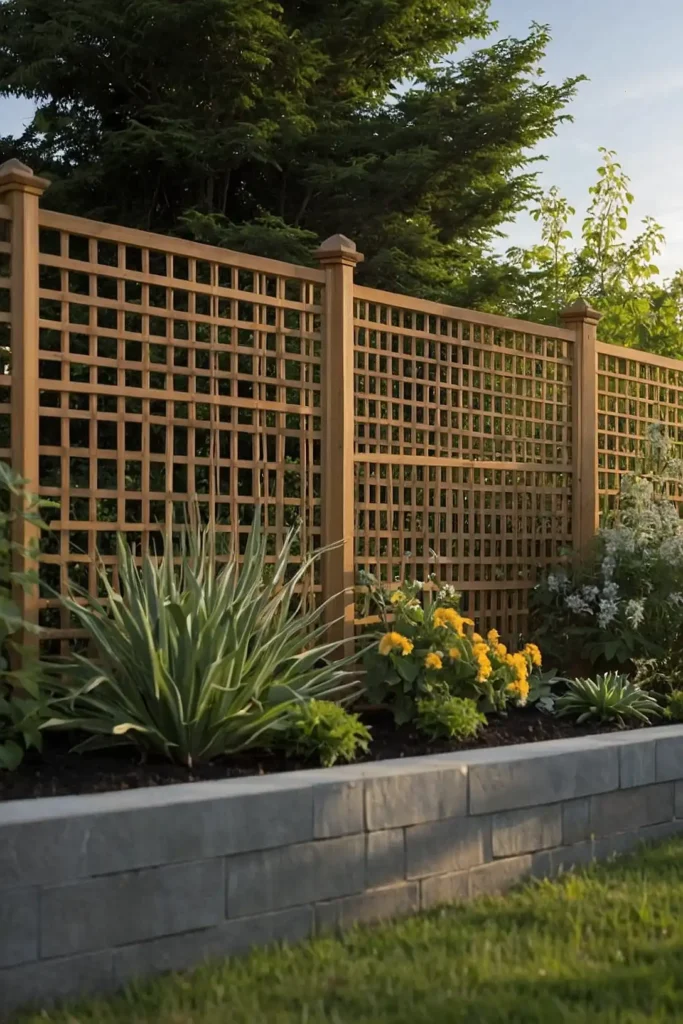
Create elegant boundaries with affordable lattice panels from home improvement stores. Mount them between wooden posts.
Choose plastic lattice for weather resistance and low maintenance. Wooden versions cost less but require seasonal treatment.
Train climbing plants up the lattice for natural beauty. This creates living privacy screens over time.
5: Reed Fencing Rolls
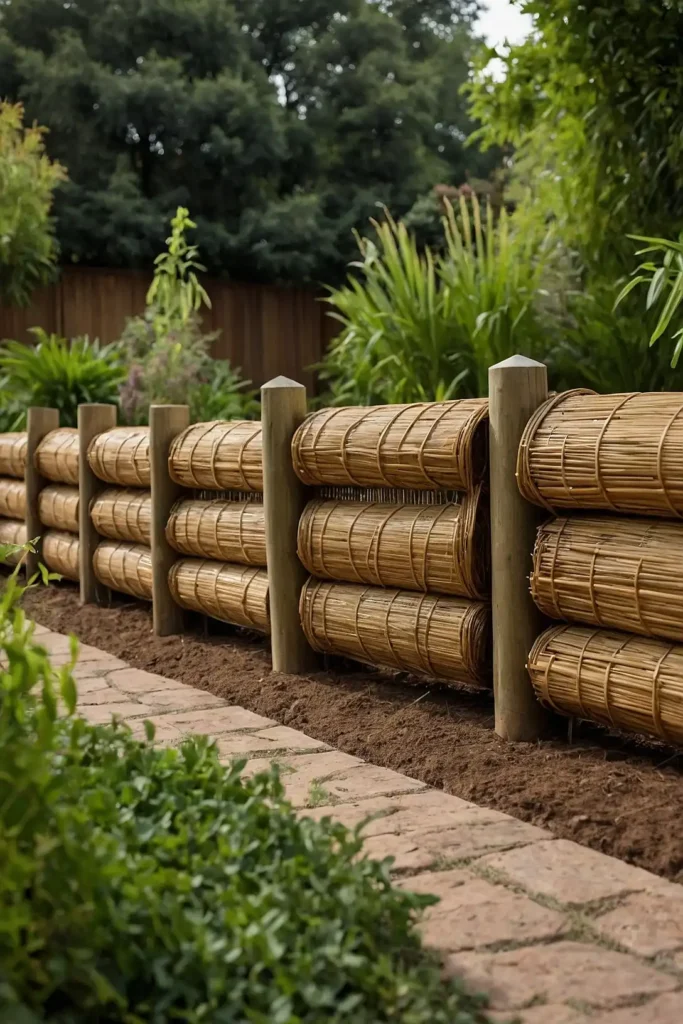
Install natural reed fencing for eco-friendly garden boundaries. These sustainable materials create attractive privacy screens.
Attach reed rolls to existing fence posts with zip ties. They provide excellent wind protection for plants.
Choose between different reed thicknesses for varied privacy levels. Natural weathering creates attractive silver-gray patinas.
6: Corrugated Metal Sheets
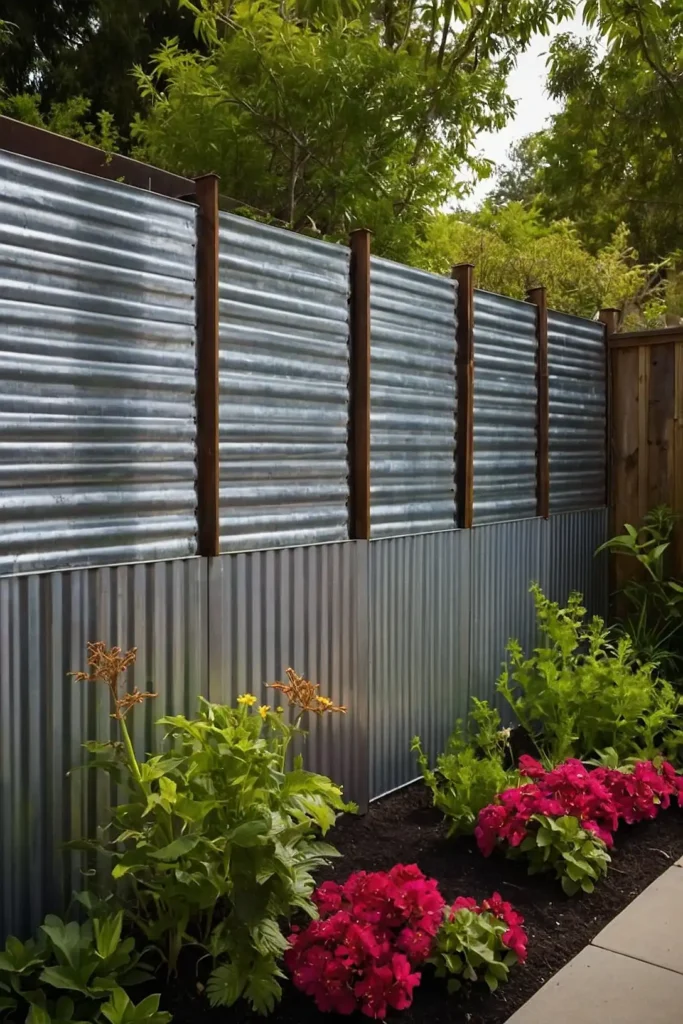
Use corrugated metal sheets for modern industrial-style fencing. Choose galvanized steel for rust resistance.
Install sheets vertically between metal or wooden posts. This option provides complete privacy and wind protection.
Paint metal sheets in bold colors for artistic effects. They reflect heat away from sensitive plants effectively.
7: Recycled Wood Plank Fencing
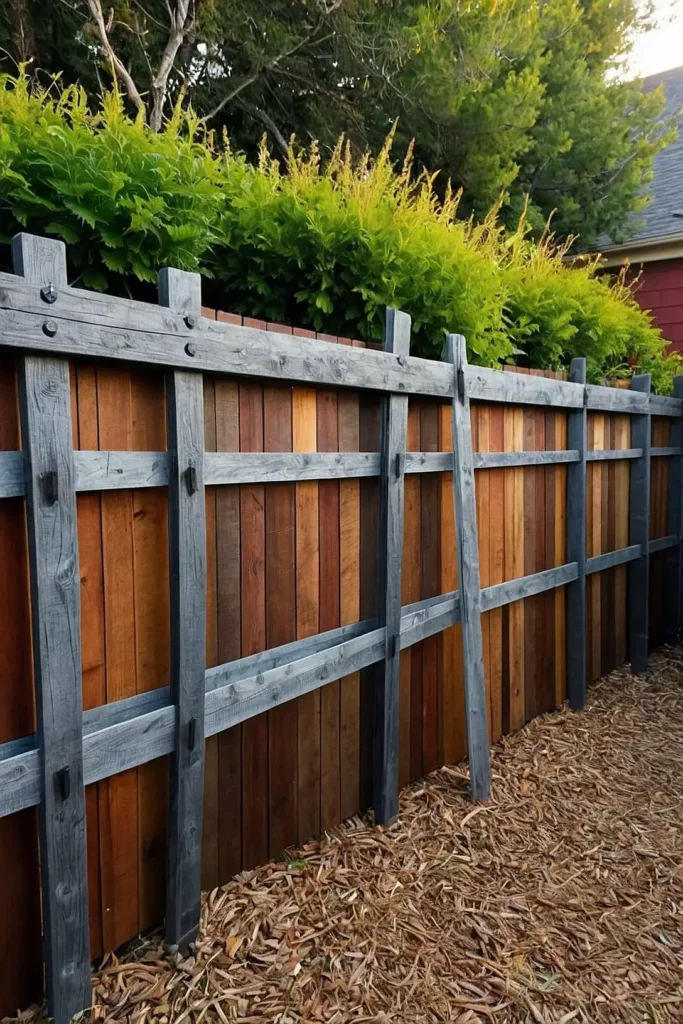
Build custom fencing using reclaimed wood planks from construction sites. Sand and treat wood before installation.
Mix different plank widths for interesting visual textures. Horizontal installation creates modern clean lines.
Stain planks in alternating colors for unique patterns. This approach costs less than new lumber purchases.
8: Fabric Privacy Screens
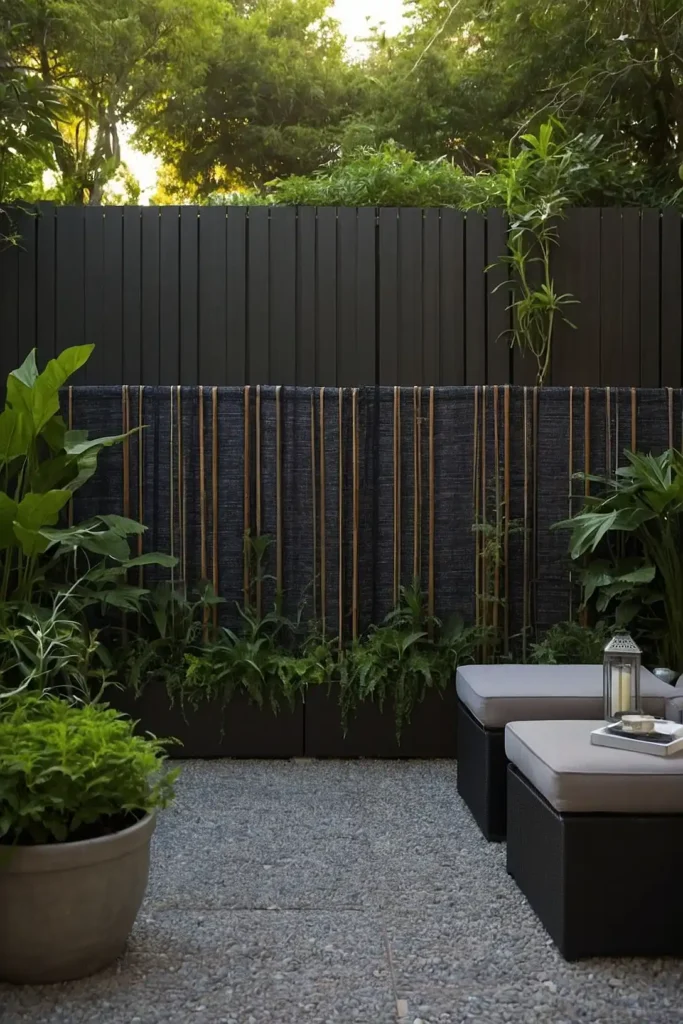
Hang weather-resistant fabric between posts for instant privacy. Choose marine-grade materials for durability.
Install grommets along fabric edges for easy hanging. Remove screens during severe weather for protection.
Select colors that complement your garden palette. This option provides maximum flexibility and easy storage.
9: Living Willow Fence
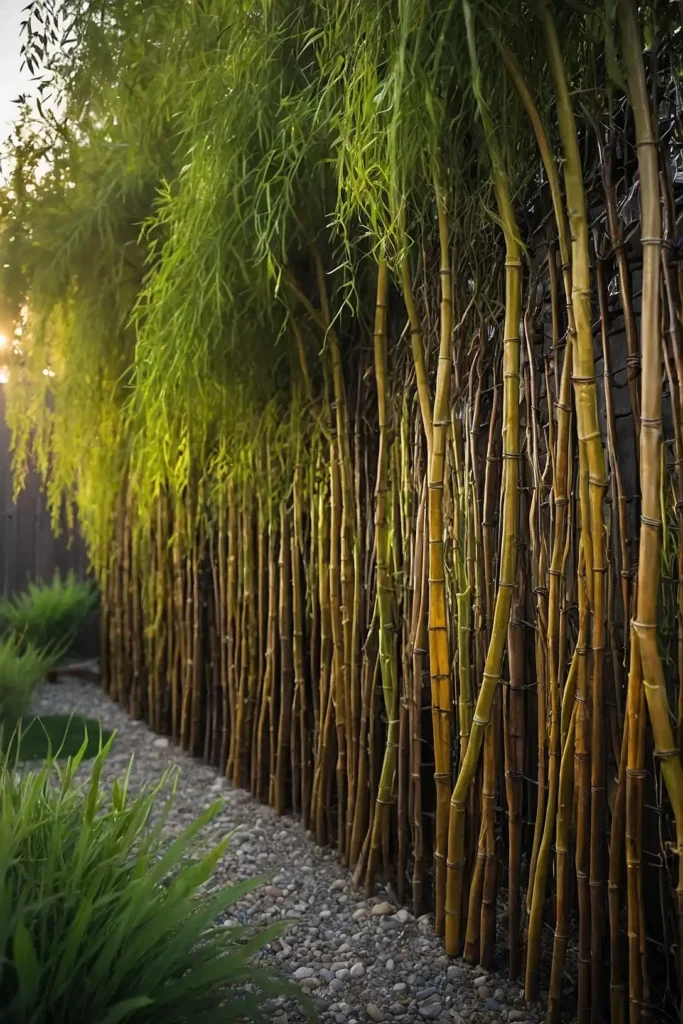
Plant willow branches directly in the ground for living fences. These fast-growing plants root easily.
Weave branches together while they’re still flexible. Water regularly during the first growing season.
Living fences improve over time naturally. They provide habitat for birds and beneficial insects.
10: Brush and Branch Fencing
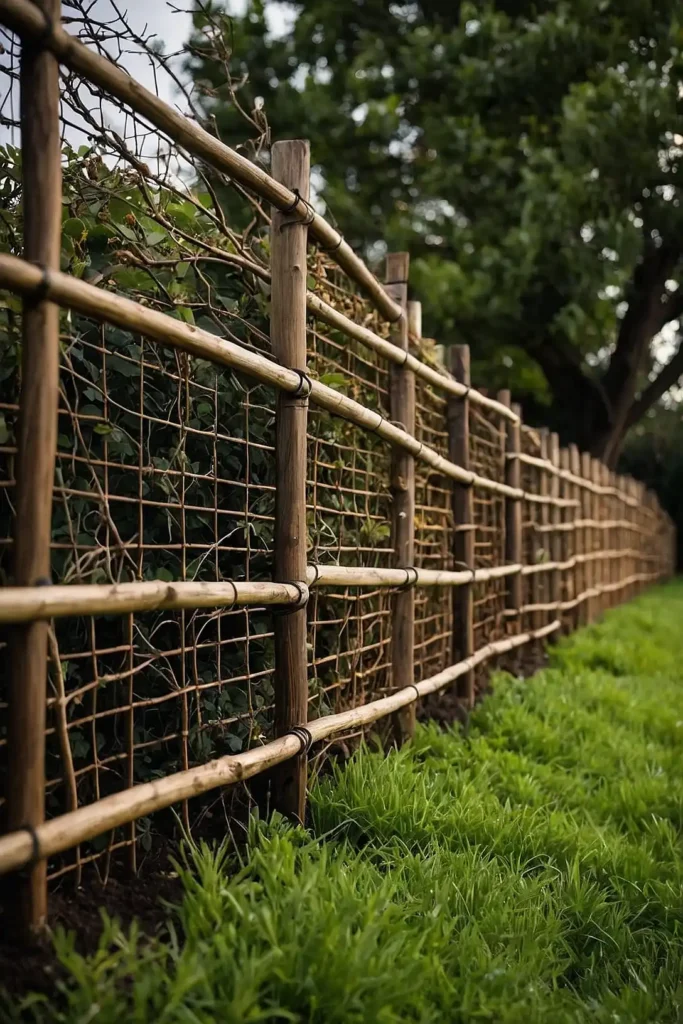
Collect fallen branches to create rustic brush fencing. Secure bundles between wooden posts with wire.
Use branches of similar diameter for uniform appearance. This option costs nothing but time and effort.
Replace sections as materials decompose naturally. Different wood types create varied colors and textures.
11: Vinyl Picket Fence Sections
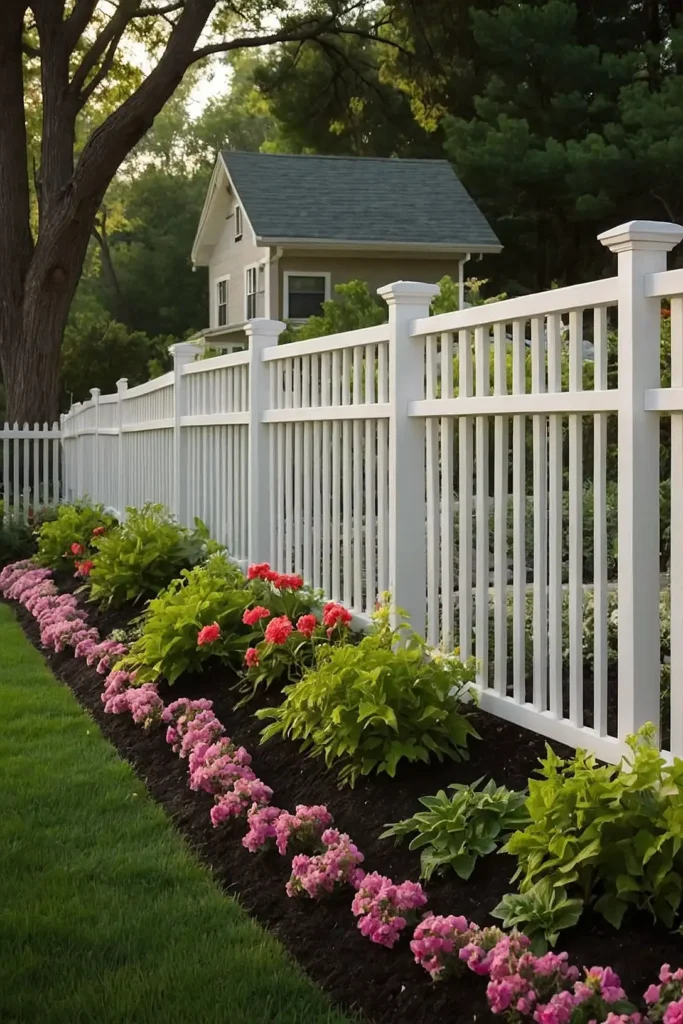
Install pre-made vinyl picket sections for classic white fencing. These panels resist weather and require minimal maintenance.
Choose from various picket styles and heights. Installation requires basic DIY skills and standard tools.
Vinyl fencing costs more initially but saves money long-term. It never needs painting or staining treatments.
12: Hardware Cloth with Privacy Fabric
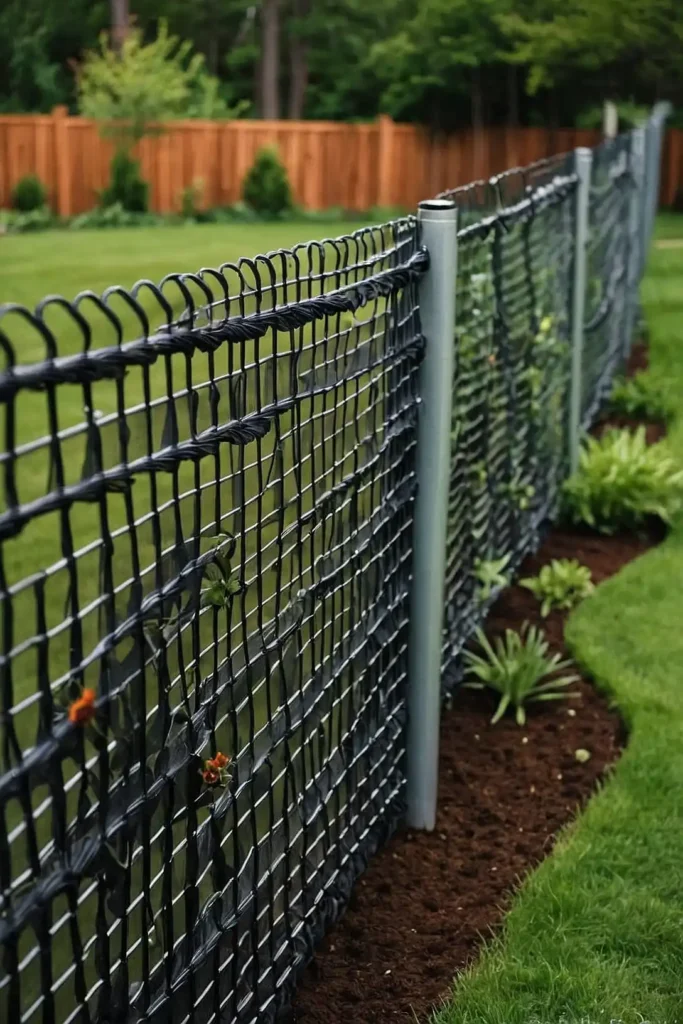
Attach hardware cloth to posts and weave privacy fabric through openings. This creates custom privacy levels.
Choose mesh sizes based on your specific needs. Smaller mesh provides better privacy and wind protection.
Replace fabric seasonally for different looks. This system adapts easily to changing garden requirements.
13: Composite Fence Panels
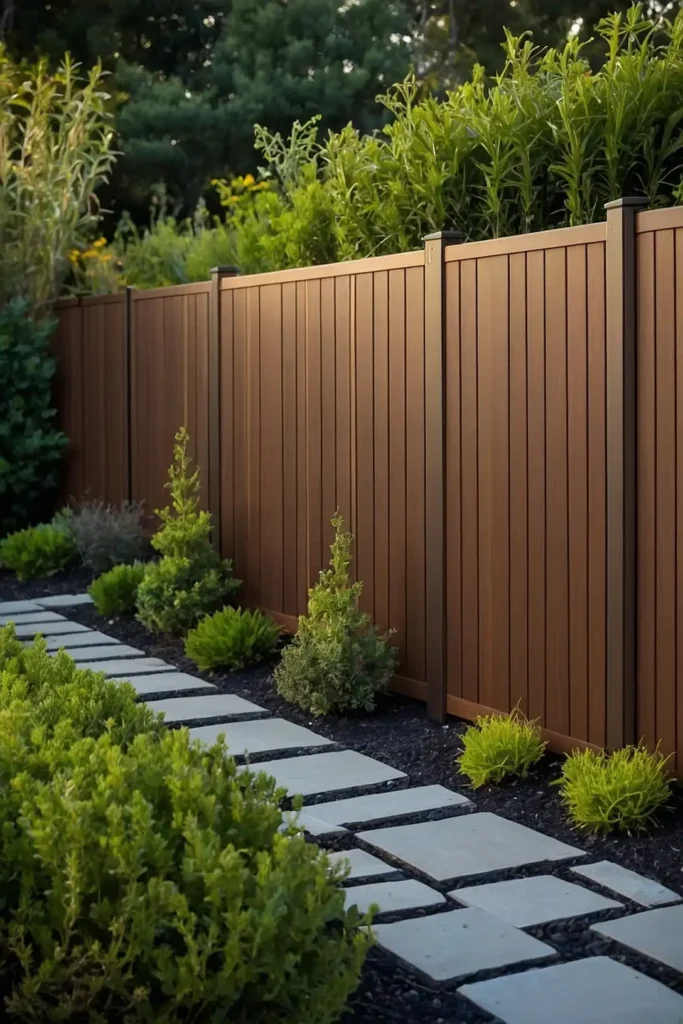
Use composite decking materials to build custom fence panels. These recycled materials resist rot and insects.
Cut panels to fit your exact space requirements. Composite materials cost less than premium lumber options.
Choose from wood-grain textures and multiple colors. They maintain appearance without seasonal maintenance needs.
14: Split Rail with Wire Mesh
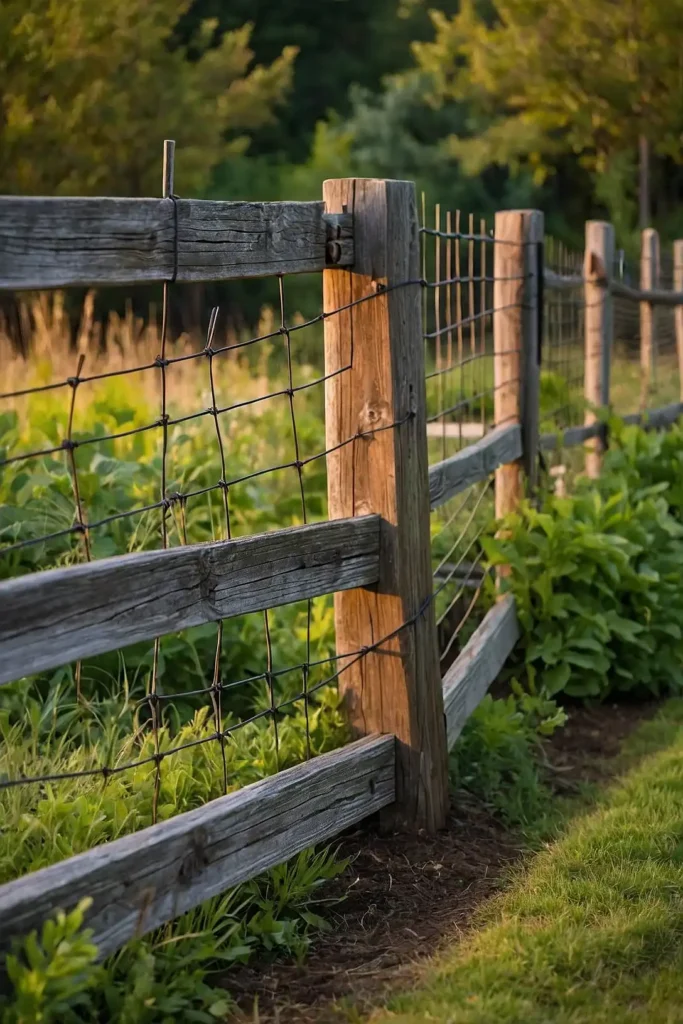
Combine traditional split rail fencing with welded wire mesh. This provides security while maintaining rustic charm.
Attach mesh to the inside of rail fencing. Choose mesh height based on your specific containment needs.
This combination costs less than solid privacy fencing. It works well for pet containment and plant protection.
15: Recycled Plastic Lumber
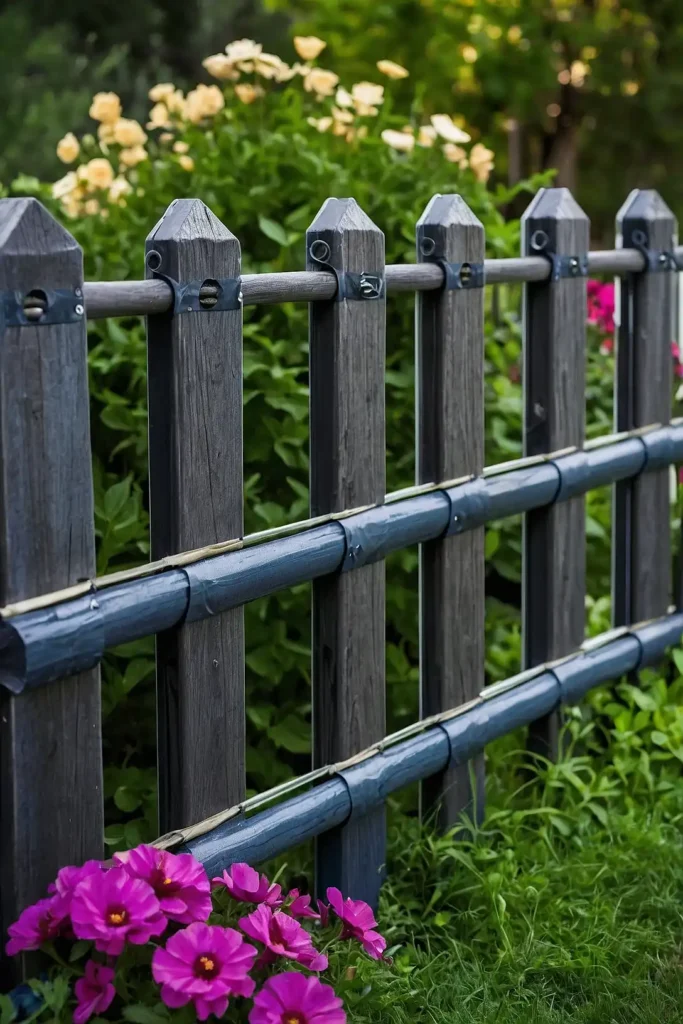
Build fencing using recycled plastic lumber that resembles wood. These materials never rot, warp, or require painting.
Cut and install like traditional lumber materials. Choose from various colors and wood-grain textures.
Initial costs exceed wood but eliminate maintenance expenses. Plastic lumber lasts decades without replacement needs.
16: Cinder Block Planter Fence
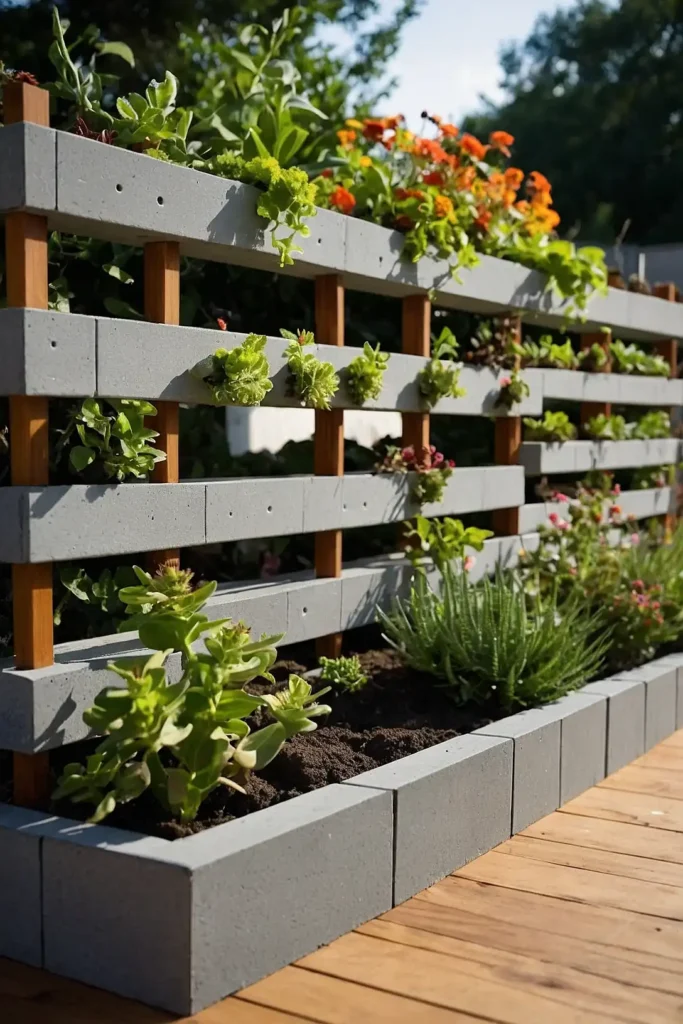
Stack cinder blocks to create fence sections with built-in planters. Fill hollow centers with soil and plants.
This option provides privacy while creating additional growing space. Choose trailing plants for cascading effects.
Paint blocks in coordinating colors for visual appeal. This system combines fencing with functional garden features.
17: Cattle Panel Vine Supports
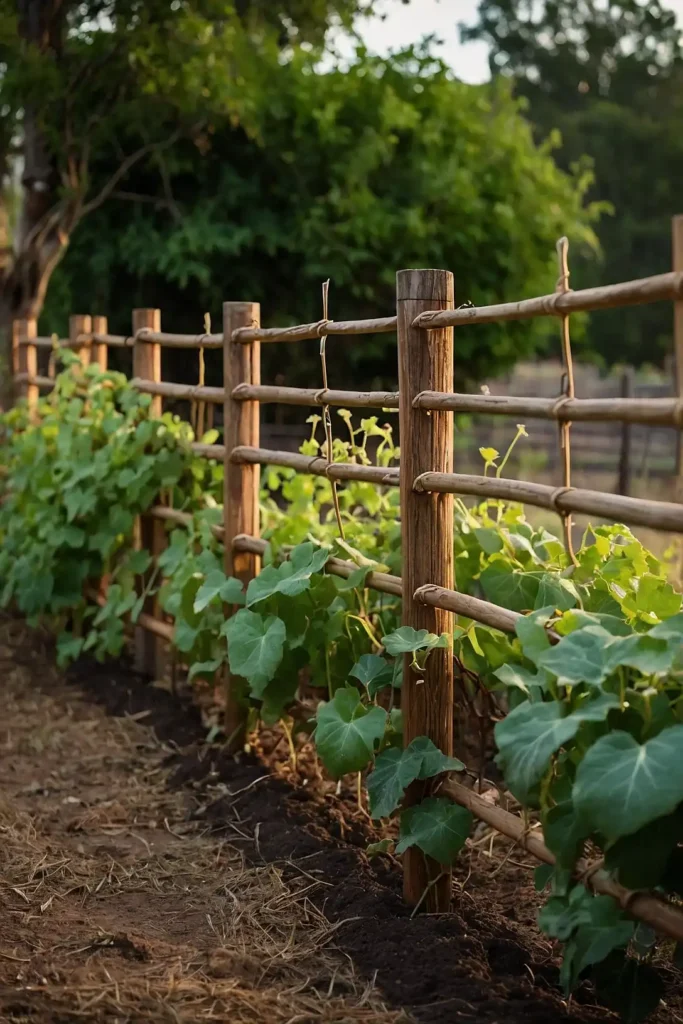
Install cattle panels vertically and train climbing vines upward. These sturdy panels support heavy plant growth.
Choose fast-growing vines like morning glories or beans. This creates living privacy screens affordably.
Cattle panels cost less than decorative trellises. They provide excellent support for vegetable climbing plants.
18: Chicken Wire with Bamboo Covering
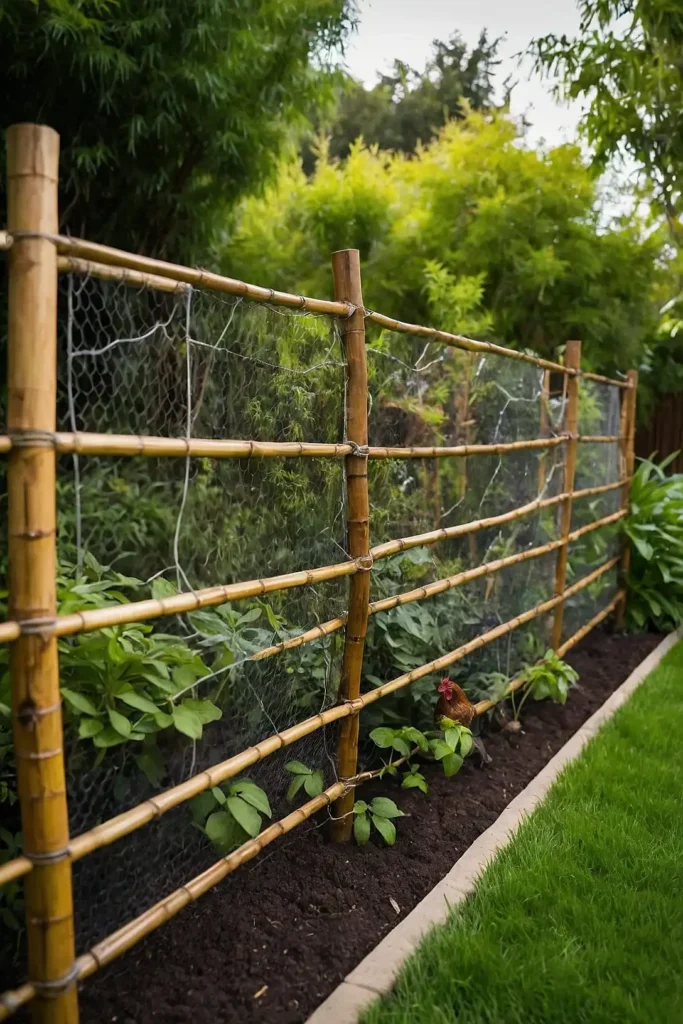
Stretch chicken wire between posts and attach bamboo screening material. This creates attractive privacy at low cost.
Choose natural bamboo for organic appearances. Plastic bamboo options require less maintenance over time.
This combination provides excellent wind protection. It costs significantly less than solid privacy fencing.
19: Tarp Privacy Fencing
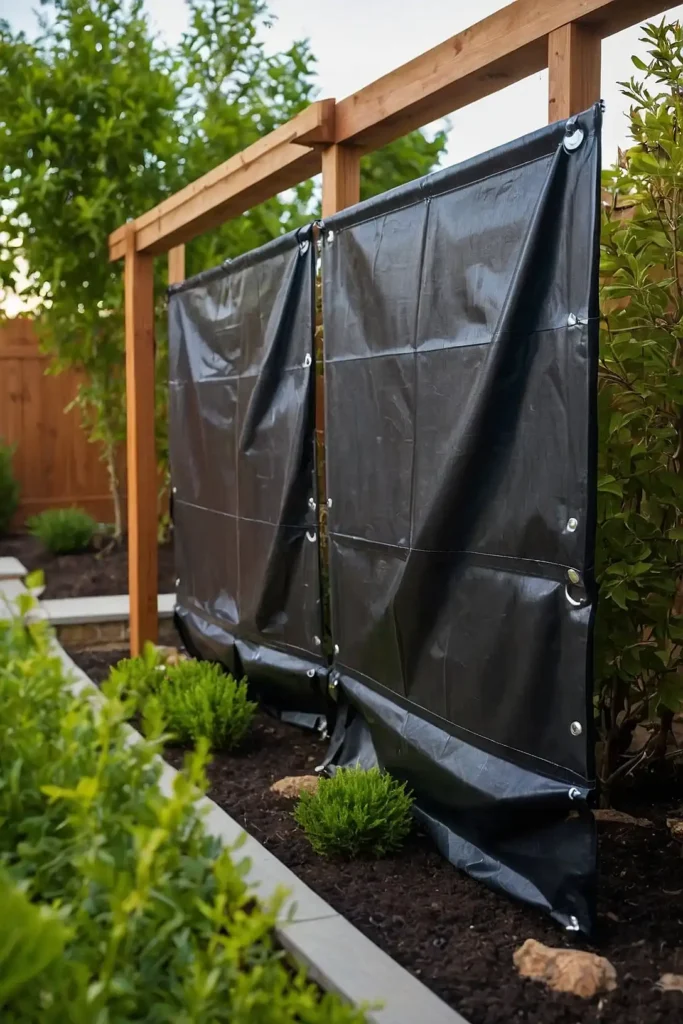
Hang heavy-duty tarps between posts for temporary privacy solutions. Choose UV-resistant materials for longer life.
Install grommets for secure attachment points. This option works well for seasonal privacy needs.
Choose neutral colors that blend with landscapes. Remove tarps during severe weather to prevent damage.
20: Rope and Post Maritime Fencing
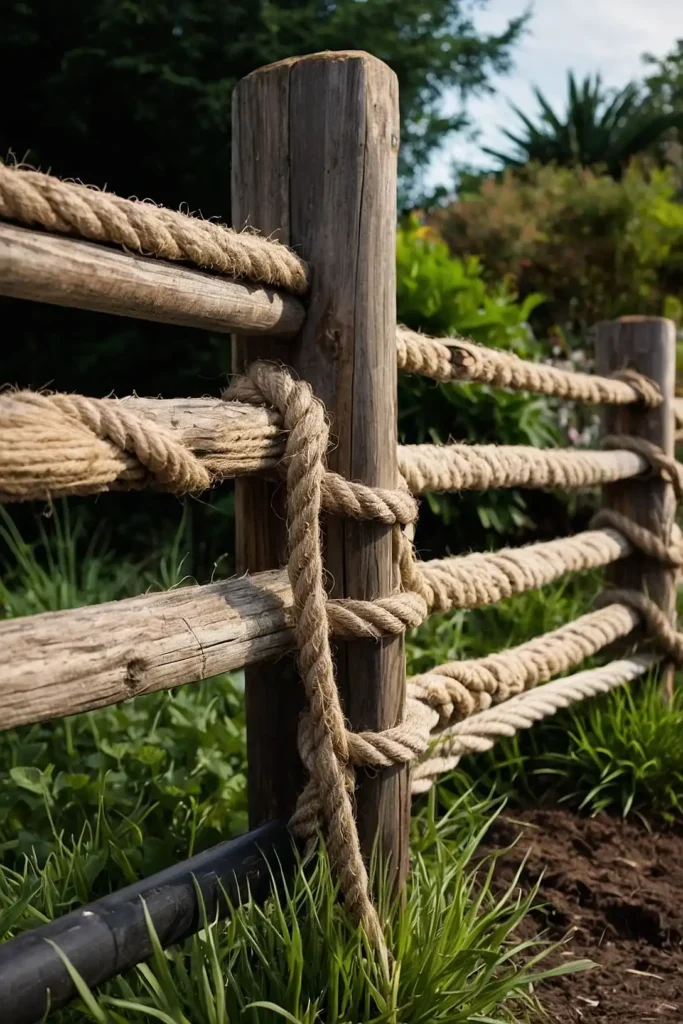
String marine rope between posts for coastal-style boundaries. Use galvanized hardware for salt-air resistance.
Choose natural manila or synthetic ropes. Install multiple horizontal lines for pet containment needs.
This option provides definition without blocking views. It works well around water features and coastal gardens.
21: Living Hedge Fencing
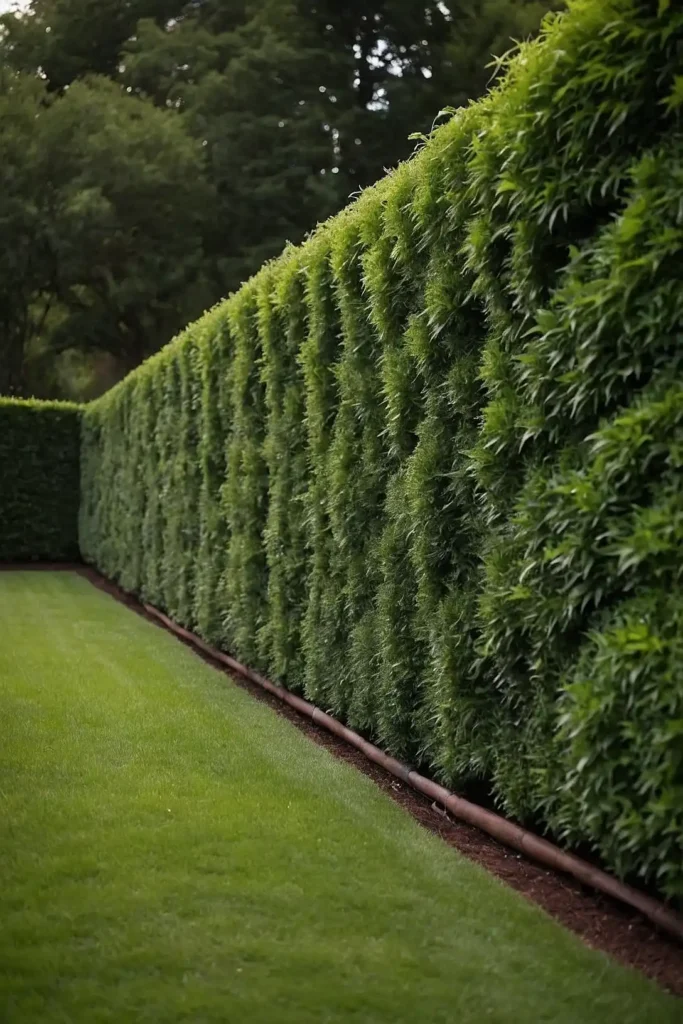
Plant fast-growing shrubs to create natural living fences. Choose species appropriate for your climate zone.
Privet, boxwood, and laurel create dense screens quickly. Space plants closer together for faster privacy development.
Living fences improve property values over time. They provide wildlife habitat and oxygen production benefits.
22: Driftwood and Beach Glass Fencing
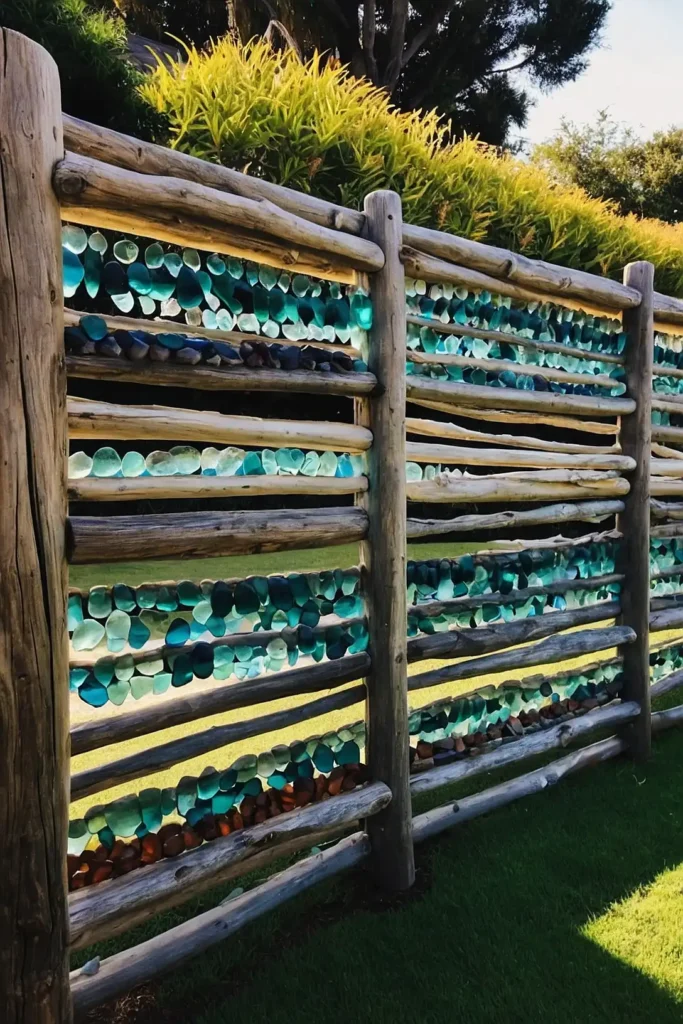
Collect driftwood pieces to create unique coastal-style fencing. Secure pieces horizontally between weathered posts.
Add beach glass or shells for decorative accents. This option works especially well in coastal environments.
Each section becomes a unique art piece. Materials cost nothing but collection time and effort.
23: PVC Pipe Fencing
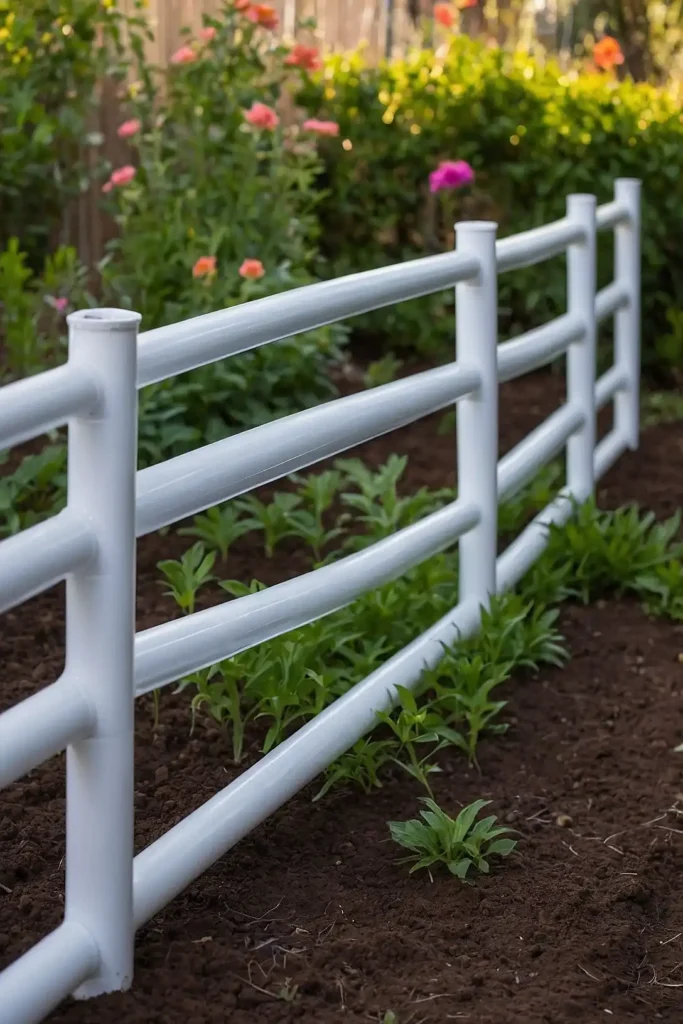
Build lightweight fencing using PVC pipes and fittings. Paint pipes to match your preferred color scheme.
Choose appropriate pipe diameters for structural strength. This option resists weather and requires minimal maintenance.
PVC fencing costs less than wood or metal alternatives. It assembles easily with basic plumbing knowledge.
24: Tire Planter Barriers
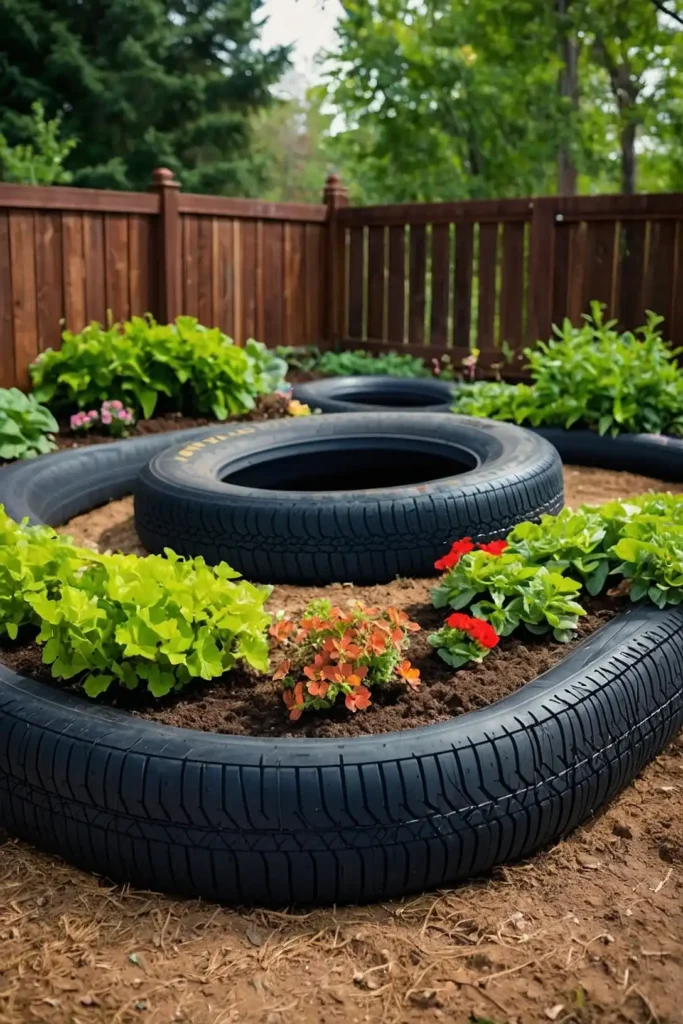
Stack old tires and fill with soil for planter barriers. Paint tires in bright colors for visual appeal.
Plant each tire with flowers or vegetables. This option recycles materials while creating functional boundaries.
Tire barriers work well for property line definition. They provide growing space in small garden areas.
25: Stone and Wire Combination
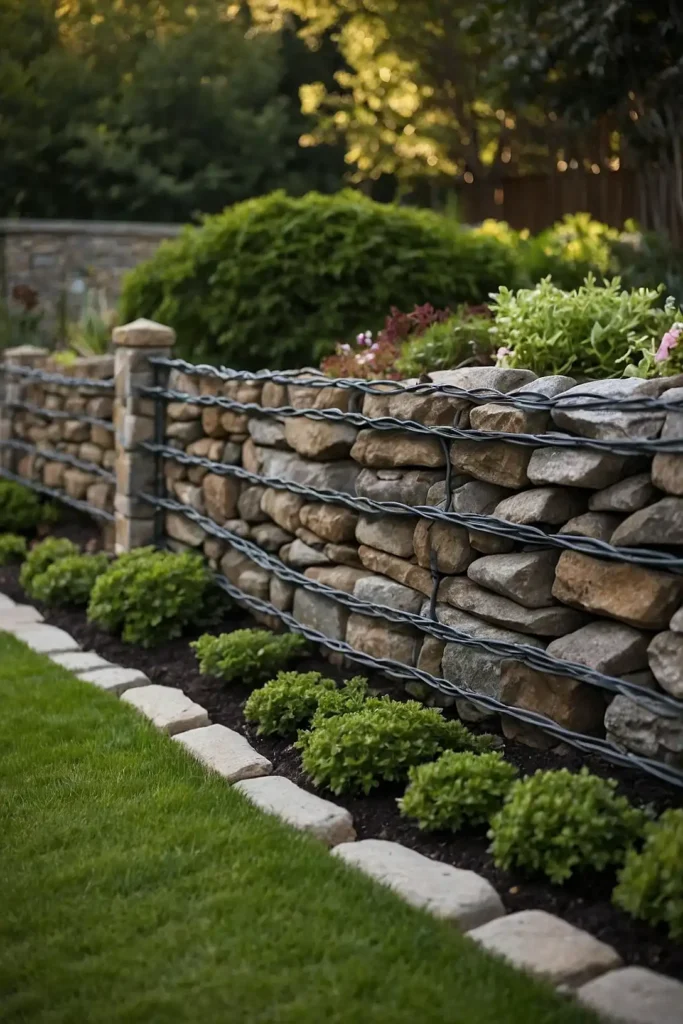
Combine collected stones with wire mesh for natural-looking fencing. Fill wire cages with decorative rocks.
Choose stone sizes that create interesting textures. This option provides excellent drainage and durability.
Gabion-style fencing costs less than solid stone walls. It creates habitat spaces for beneficial garden creatures.
26: Repurposed Shutters
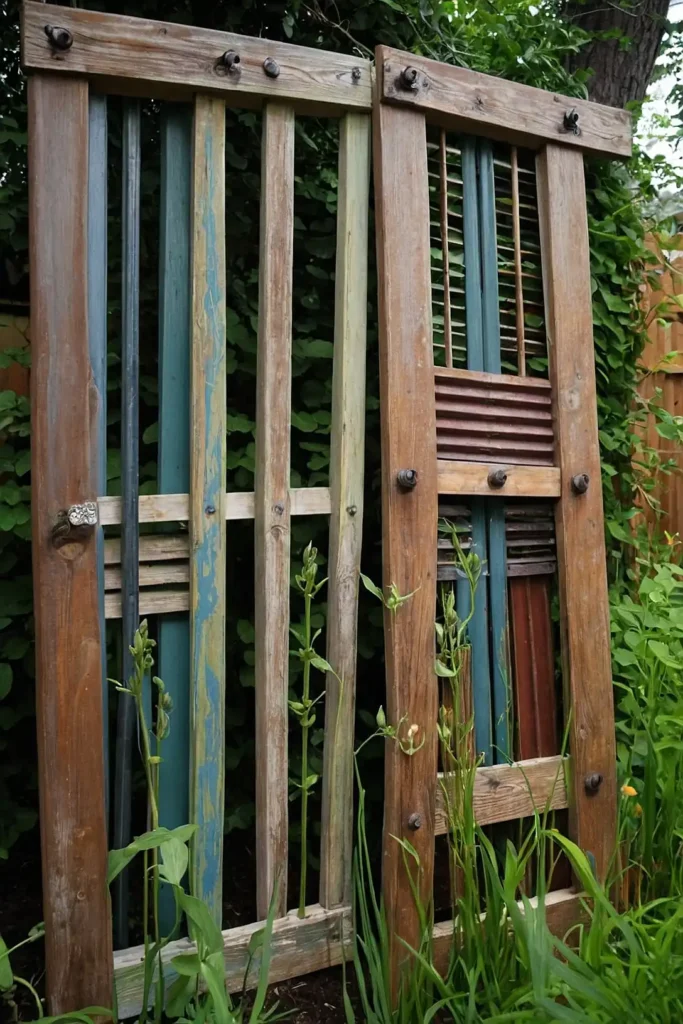
Install old shutters vertically to create charming cottage-style fencing. Sand and repaint for fresh appearances.
Connect shutters with hinges for adjustable privacy panels. This option adds architectural interest to gardens.
Louvered shutters provide partial privacy with airflow. They work well around patios and seating areas.
27: Seasonal Screen Plantings
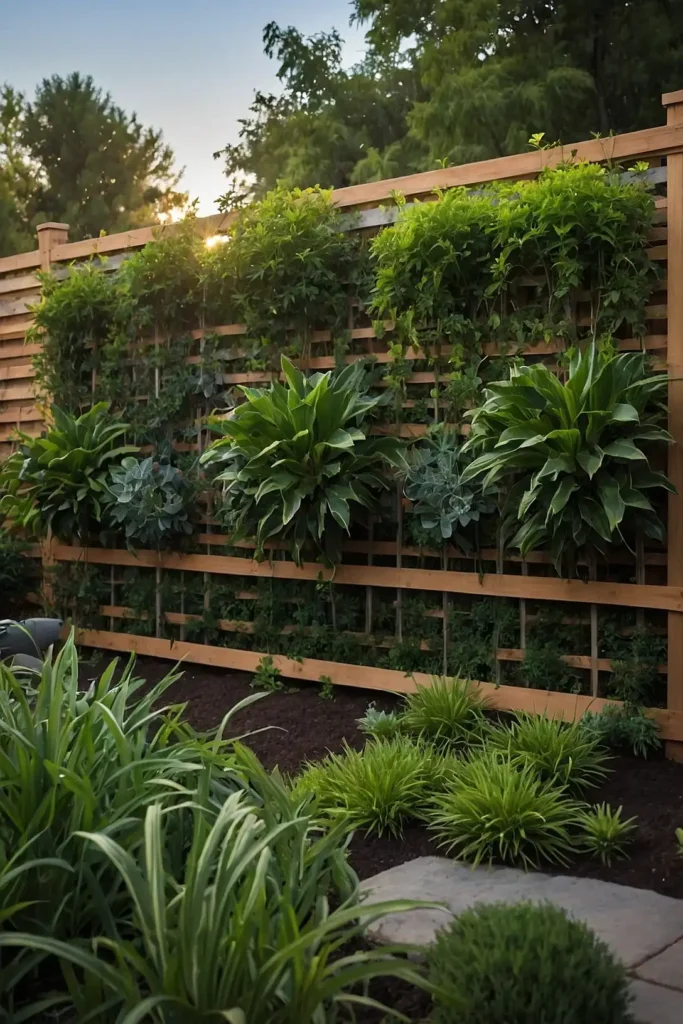
Plant annual vines and tall flowers for seasonal privacy screens. Choose fast-growing varieties like sunflowers.
Combine different heights and colors for visual impact. This option changes appearance throughout growing seasons.
Seeds cost very little compared to permanent fencing. Replant different varieties each year for variety.
Conclusion
These affordable fence ideas prove you can create beautiful garden boundaries without expensive materials or professional installation costs.

